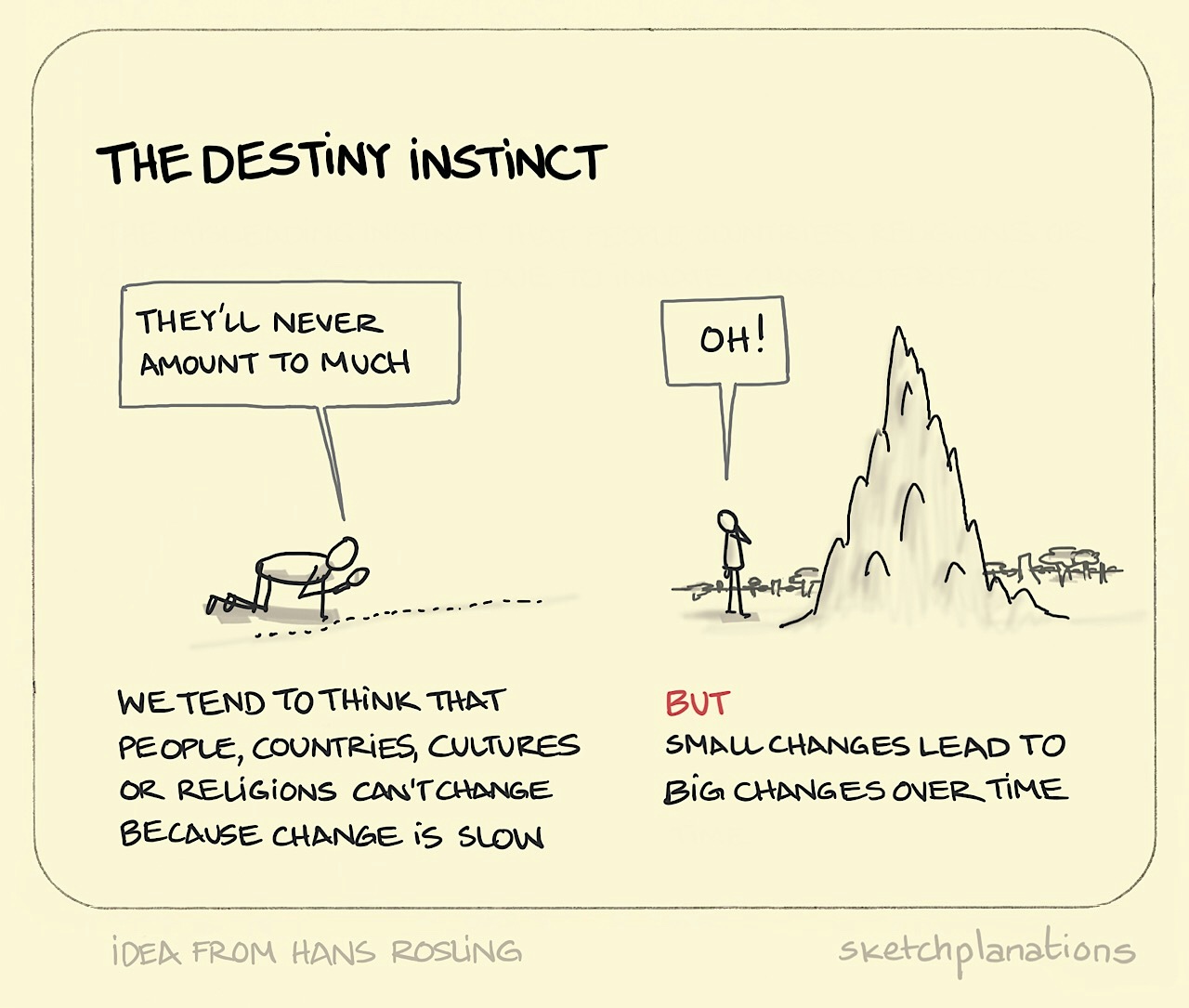The Destiny Instinct

- Copied!
👇 Get new sketches each week
The destiny instinct is the mistaken belief that people, countries, cultures, or religions can't change. But even slow change can lead to large changes over time.
Change tends to happen slowly in large, complex things like people, countries, religions, or cultures. And because the change is small, we might think they’re not changing at all. Our instinct may be that they can’t, in fact, change because of their innate characteristics. But the destiny instinct misleads us.
Small change adds up to big changes over enough time. And while things may not seem to change in a week or a month, or a year, when you look back over decades, huge changes can happen. Changes in poverty, life expectancy, economies, women’s rights, or attitudes to homosexuality — things that may have seemed at one time that they were hardly changing at all — have all transformed when we look back over sufficient time. Change that may not have seemed like it was adding up to much is still change.
Read more from the Roslings: Culture, nations, and religions are not rocks — they’re always changing .
And, at a time of the year perfect for reflection, here are four ways to control our destiny instinct from Gapminder :
- Keep track of gradual improvements. A small change every year can translate to a huge change over decades.
- Update your knowledge. Some knowledge goes out of date quickly. Technology, countries, societies, cultures, and religions are constantly changing.
- Talk to Grandpa/Grandma. If you want to be reminded of how values have changed, think about your grandparents’ values and how they differ from yours.
- Collect examples of cultural change. Challenge the idea that today’s culture must also have been yesterday’s and will also be tomorrow’s.
Also, see Stewart Brand’s Pace layers.

